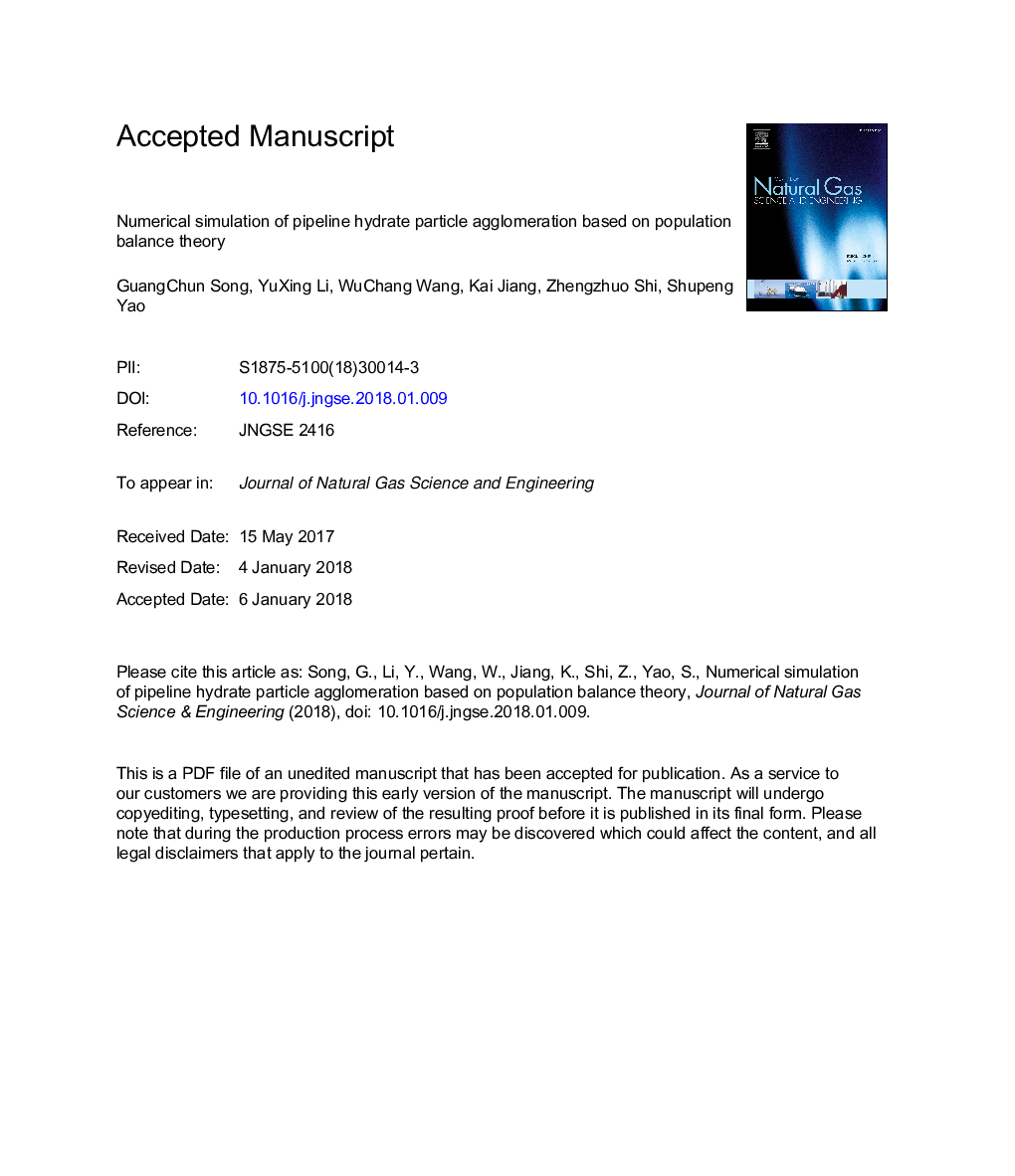| Article ID | Journal | Published Year | Pages | File Type |
|---|---|---|---|---|
| 8128354 | Journal of Natural Gas Science and Engineering | 2018 | 19 Pages |
Abstract
In offshore operations, the agglomeration between hydrate particles is a significant reason that could lead to pipeline hydrate plugging. Dynamic modeling and numerical simulation of pipeline hydrate particle agglomeration are of great importance to offshore hydrate management. For this purpose, a dynamic model of hydrate agglomeration was proposed and then used to simulate pipeline hydrate particle agglomeration in this paper. The dynamic model was established based on population balance equation, which took both hydrate agglomeration and hydrate breakage into consideration. Collision frequency, agglomeration efficiency, breakage frequency and size distribution of the sub particles resulting from particle breakage are four key parameters that involved in the dynamic model. Combined with several traditional solid-liquid flow models, the dynamic model was solved by the CFD software FLUENT 14.5 to simulate the agglomeration process of hydrate particles in the pipeline at different conditions. The influences of flow rate and hydrate volume fraction on the agglomeration process were analyzed emphatically. The simulation results were also compared with the calculation results of hydrate particle growth model and hydrate rheological model. The conclusions of this paper can provide guidance for the development of deep water flow assurance.
Related Topics
Physical Sciences and Engineering
Earth and Planetary Sciences
Earth and Planetary Sciences (General)
Authors
GuangChun Song, YuXing Li, WuChang Wang, Kai Jiang, Zhengzhuo Shi, Shupeng Yao,
